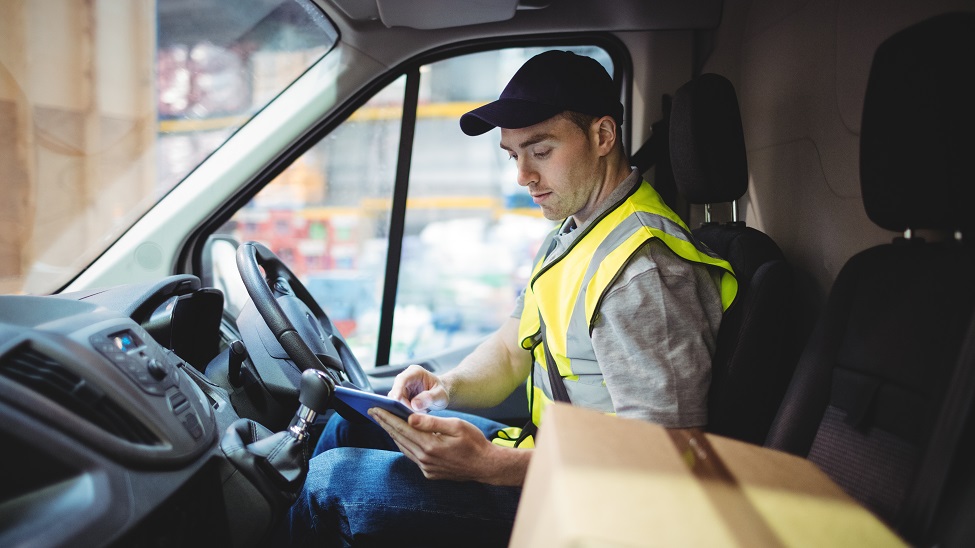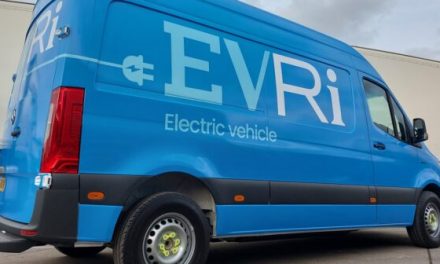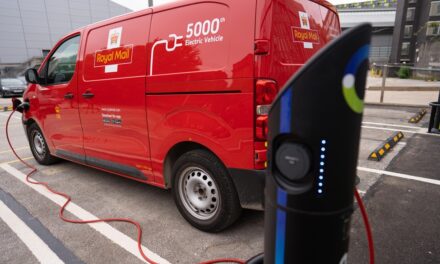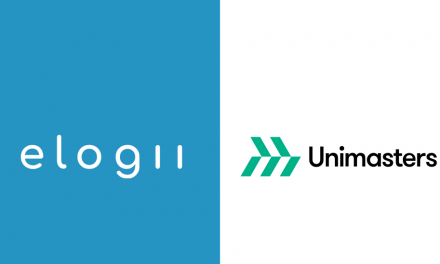
Putting the driver into the equation

Ahead of exhibiting at Post&Parcel Live next week, we speak to Tim Pigden, Managing Director and Co-Founder of Optrak to find out why route optimisation will become a crucial tool for parcel distributors, and how building driver knowledge into solutions is the key to more efficient parcel delivery.
What drew you to the parcel logistics sector?
We’ve been talking to parcel operators and academics in the area for a long time, in particular around routing high-density urban deliveries. There’s a lot of work going on in some of the collaborative industry-research bodies we’re part of on sustainability and energy challenges of low-emissions options.
However the planning model for parcel delivery as it was managed in the industry pre-COVID was responsive enough for route optimisation to not be a key consideration for parcel companies when we spoke to them, especially given some of the techniques we were talking about were untested.
COVID has changed all of this. Its impact on demand for online deliveries, availability of drivers and the experience of newly onboarded drivers has dramatically stretched the capacity of operators which has been seen especially over Christmas in falling service levels. Recruitment and investment in fleet can help short term challenges, but it isn’t a long-term sustainable future.
What challenges do you believe you can help the parcel sector solve?
The key challenges we’d like to help with are related to route planning in an environment where flexibility and responsiveness to change are critical but where the area knowledge and skills of the driver can still be exploited. The high volume of goods moved in parcel delivery and the importance of driver knowledge has historically favoured establishing a more fixed model with less dynamic route and area adjustment. This usually takes the form of drivers having patches they know well, usually based around postcodes, with some flexibility on the part of drivers to reorder drops.
This model doesn’t allow for dynamic changes and doesn’t factor in elements such as historical road speed or parking locations in creating routes – instead expecting drivers to know which roads to avoid and where to park to reach a block of flats and so on.
In the current climate, this model has really been challenged. It struggles when demand grows and fluctuates unpredictably and you can’t count on your existing workforce to be available and capable of meeting this volume. This is the challenge we’re looking to address with Optrak Parcel.
What parallels are there with other forms of distribution? What’s different?
There are certainly a lot of parallels in how parcel operators run with other forms of road-freight, with common issues such as vehicle capacity, shifts, breaks and rush-hour road speeds, using historical data. The parallels with other multi-drop (or collection) operations are even more striking, though only something like commercial waste collection shows a similar level of drop density (over 100 stops per route).
Parcels are typically delivered with open time windows (between 7am and 6pm) which is less complicated than road freight where customers will often define delivery slots.
There are two main differences then. The first is scale (a parcel courier can be making 80 or more drops a day) with each depot managing tens of thousands of deliveries per day. The size of the ‘problem’, as we would call the typical daily operation from an optimisation perspective, is massive. Secondly the nature of deliveries is more complicated – attending a block of flats for multiple deliveries has many more complexities than attending a customer premise for delivery. You can have multiple drops in one place, multiple entrances for one site, a set of residences you may have never been to or challenges parking adjacent to the delivery location. All of this lends itself to driver knowledge and more slack in manually planned solutions compared to road freight where you’ll have more standardised check-ins and unloading procedures and rates. Any solution that looks to address parcel routing needs to consider this.
What are the challenges of using standard vehicle routing techniques and optimisation used in other industries?
It’s really an expansion of those two differences – scale and delivery complexity – that have a big impact on the way route optimisation works generally.
Scale matters because, in essence, route optimisation is the challenge of finding the right combination of orders to group onto a trip and putting them into the best visit sequence, taking into account the time it takes to reach each of them and the constraints on doing that work. The larger the pool of orders, the greater amount of combinations that can occur, which means the optimiser has to run for longer to find a good solution. This ‘problem size’ issue is what has historically stopped conventional optimisers from solving challenges like parcel operations, particularly if they are simultaneously coping with the impact of variable journey times (rush hour traffic).
Delivery complexity is the other challenge. For parcel operators, they can expect their drivers to be out of the vehicle making drops for much more than half the working day. Modelling this accurately in trip construction therefore has a significant impact on how efficient and feasible the trips an optimiser builds are. If you set a rate per item, you run the risk of overstating a sequence of deliveries to the same block of flats. If you set a rate per drop premises, you make assumptions about how easy it is to access all the buildings, which can be impacted by sites with multiple entrances, or a concierge service, or no lift. Compounding this is the fact that unlike road freight, you’re not necessarily returning to the same customers with significant frequency and in many cases might be attending new customers for the first time.
Modelling this in route optimisation requires a more nuanced and adaptive structure, with a feedback mechanism to tune initial estimates, which is not something standardised route optimisation tools are designed for.
In particular, a standard route optimisation will produce rounds that don’t match the driver’s knowledge areas well.
And this is where the importance of driver knowledge comes in?
Absolutely. Given such a large amount of time in a trip is spent out of the vehicle, driver experience is crucial, whether it is navigating a block of new-build flats that they’ve been to previously, but aren’t well addressed in the system or a premise with restricted access and a poorly geolocated delivery point. And it’s not just “out-of-vehicle” time. Parking can also be an issue – less important for domestic deliveries, perhaps, but much more important with deliveries to businesses.
This knowledge has to be integrated into any system that looks to automate route construction and assignment of drivers. Feedback into the system of historical behaviour, especially of good historical performance from experienced drivers is important to capture.
This can be used to reinforce driver allocation. The better the driver’s knowledge and experience of an area the more productive the driver. Because, in a fluctuating environment, it is never possible to give each driver exactly the same area, drivers will also build up knowledge of adjacent patches. New drivers’ performance and allocation will also be tracked allowing the knowledge and therefore productivity to increase.
Can you tell me about the development you are doing?
We’re working, with financial support from Innovate UK, the government’s innovation agency, on Optrak Parcel, a web-based solution that tackles those two challenges and interfaces with current systems and processes as much as possible.
To address the scale issue, we’re using new optimisation techniques and parallel computation on high-scaling compute resources in the cloud to tackle the solution calculations much faster. This allows us to run problems that might have taken hours previously to run in minutes.
For delivery complexity, it’s all about getting driver insight and historical behaviour into the application and applying new self-tuning techniques to our data model. In effect, it’s machine learning – building from past sets patterns (such as park-up locations) and drivers who perform well and assigning them as much as possible to those areas whilst also allowing more dynamic routes to be made and new drivers onboarded. The performance analysis side will drive more insight into the business too. This is tied in with external data – address sources such as Ordnance Survey AddressBase Premium provide information about the property type which can also be fed in to improve predictions of time to deliver.
The goal is a platform that planners will use on a daily basis to allocate trips which take into account as much driver experience as possible, helping parcel operators keep the value of knowledge as much as possible whilst transitioning to a dynamic approach which scales with demand and manages changes in driver availability.
How can route optimisation help companies meet sustainability targets and tackle the growth of e-commerce?
The biggest barriers we see to organisations transforming sustainably are the unknowns of change, a tendency to overestimate investment risks and a desire for continuity. The solution to these challenges rely on having better information and modelling of impacts a change will make, what benefits it will bring, and how to plan for associated impacts of the change.
We see route optimisation as a crucial tool for distributors in this regard. Platforms like ours utilise all the relevant operational data of your operation and help visualise and simulate scenarios beyond day-to-day planning. Want to see what will happen if you introduce a fleet of electric vehicles (adjusting range or incorporating charging) or change your infrastructure? You can model these changes and optimise on historical data. Want to transition gradually to more sustainable delivery approaches? You can identify which parts of your service are most amenable to these changes, through simulation, then test out large-scale transformations in smaller trials.
Ultimately if businesses have sustainability targets based around improving existing operations, the ability to have those operations mapped and a simulation tool to experiment with different tactics is vital. If it is future growth, then the ability to model the impact of that change on current levels allows you to build sustainable practises from the start.
This includes adapting to the growth of e-commerce. Route optimisation provides the dynamic framework for businesses to review practises and adapt to growth whilst ensuring they keep customer satisfaction levels high and adhere to operational parameters. Other solutions can help address other parts of the supply chain (improved picking and sorting, better proof-of-delivery systems) but only route optimisation can improve the efficiency of the delivery planning process itself to meet demand.
What does sustainability mean for you personally?
Sustainability is really about building a framework of policies and technology that allows you to move to more environmentally and socially responsible behaviours as a business. Anything you can invest in which allows you to better understand what you do, how you do it and where you can improve to have a positive impact is key.
Groundwork to incorporate green solutions and technology also needs to start now. Get the structures, data and leadership in place and low carbon options will slot in effortlessly when they’re ready, but if you wait for them to be finished before starting you’ll miss the boat.
What are your next steps with the work?
Get our solution up and working in a proof-of-concept environment. We have all the elements ready to start applying to simulated data sets, but the real challenge will be finding parcel operators to co-operate with to get real data in and demonstrate the benefits as well as refine the end service.
Who are you looking to collaborate with in 2021?
Anyone interested in seeing how parcel planning can be planned more efficiently! The model we’re looking to tackle is pretty common across the UK and Europe, although there are a few more elements in Europe to consider, such as prevalence of parcel lockers. There is a degree of localisation to manage with each country we operate in, but given the timescales for our project, we’d most like to work with organisations committed to innovation research who can easily share data and review simulations, regardless of where you are working. If the above challenges are something you’re looking to address, please do get in touch!
 About the author
About the author
Tim Pigden is the Managing Director of Optrak and a Fellow of both the Operational Research Society and the Chartered Institute for Logistics and Transport. He has over thirty years of operations research and vehicle routing expertise designing route optimisation systems and managing external consultancy projects with international commercial and logistics organisations such as DHL, BP Castrol, Shell, Menzies Distribution and Kuehne + Nagel.
In addition to commercial activities, he is also Senior Visiting Researcher at Heriot-Watt University and Honorary Practitioner at Kent University Business School and gives talks, seminars and workshops at several other UK universities.
Post&Parcel Live will be held virtually from 27-28 January. No matter where you are in the world, don’t miss your chance to be at this wide-reaching, industry leading conference and exhibition. Register for free: http://postandparcel.live/register/










